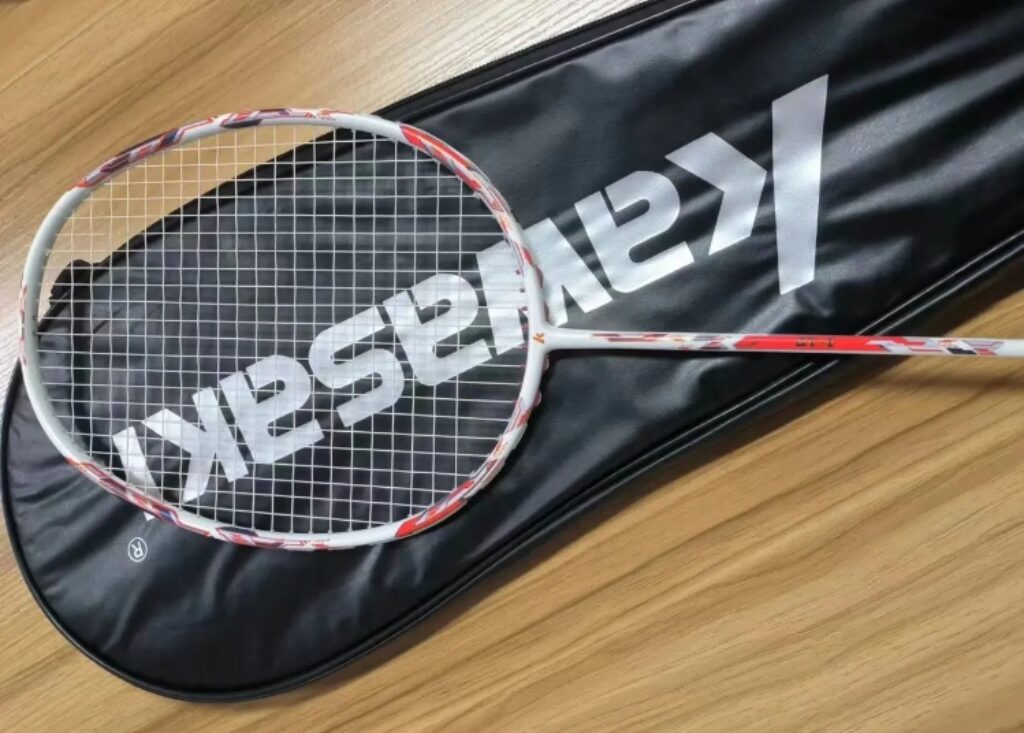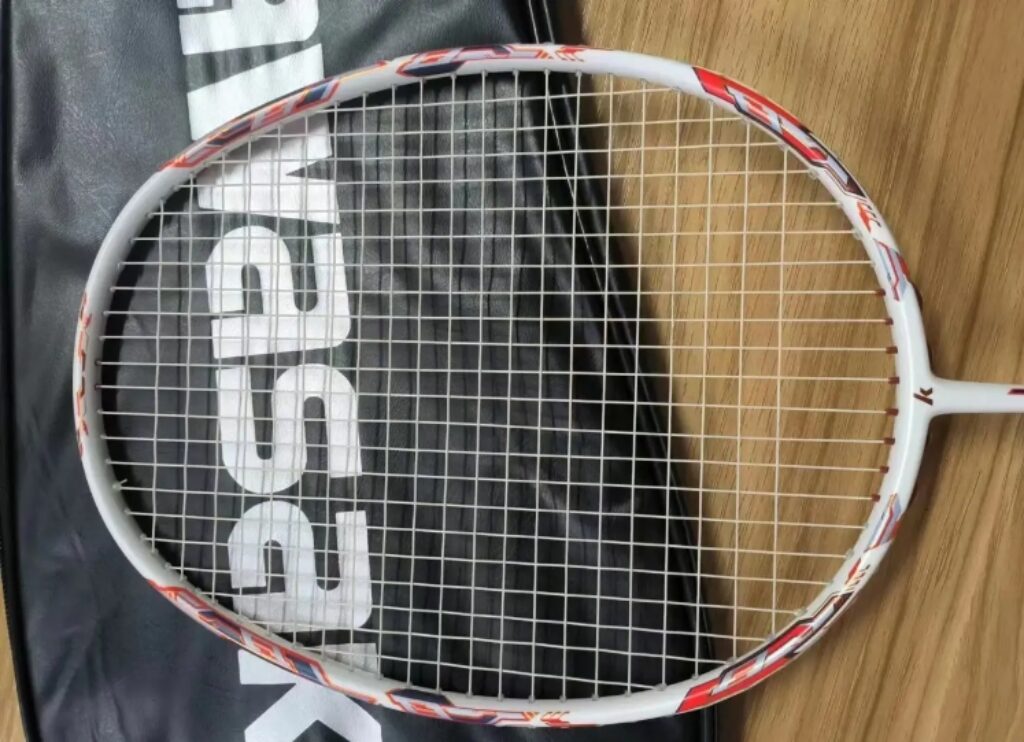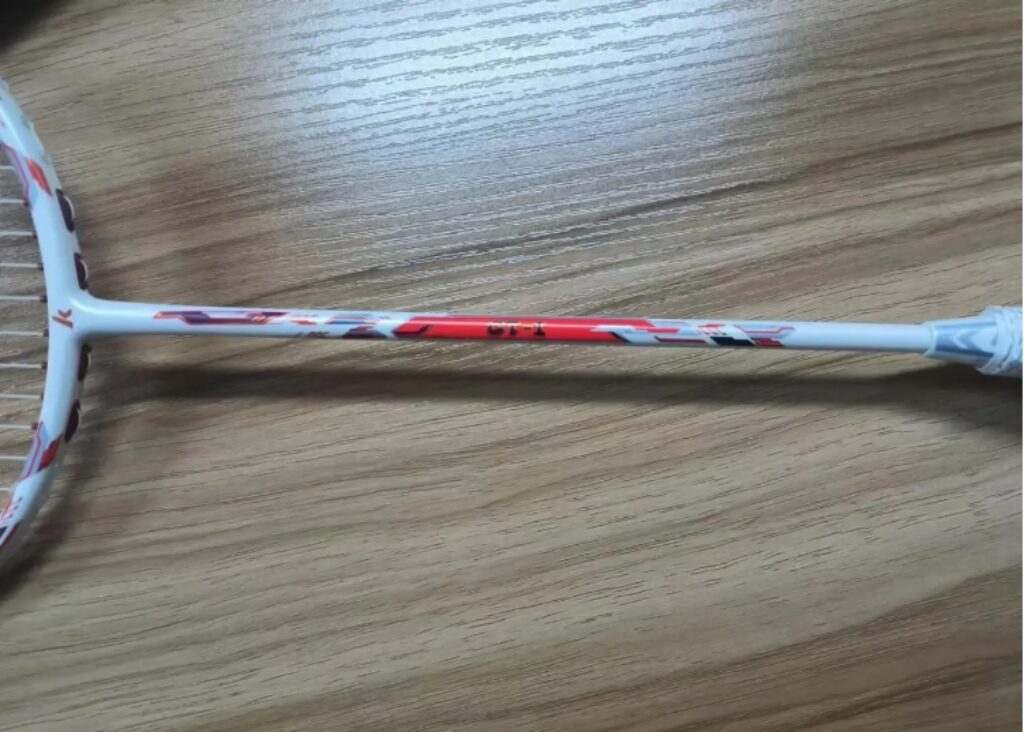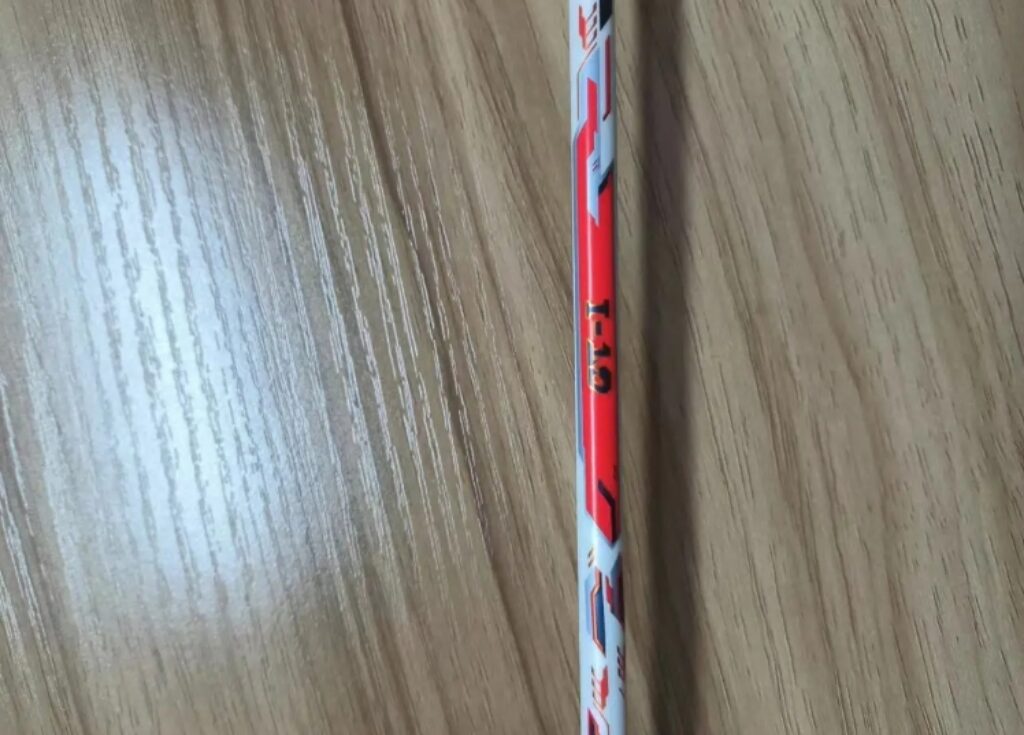The White Swan TU160 had already left a strong impression on me, and this similarly priced Little Cannon GT-I also performed quite well.

Appearance: The mech-style flamingo color scheme with a white and red base, accented by gold patterns, features a symmetrical design. The top and T-joint grommets are also red, which I personally think looks fantastic. For a price under 200, I always worry about paint quality, but after long-term use, I realized my concerns were unfounded. Aside from a small paint bubble near the T-joint, the rest is nearly perfect. The overall texture is comfortable and robust—truly both attractive and durable, plus it’s affordable enough not to feel bad about using it.

Parameters: 4U G5 spec, 76-hole box frame, 3-9 string grooves, unstrung weight with grip and tape at 94.0g, grip length 205mm, shaft length 215mm, balance point around 300mm, strung with VBS66N at 26 lbs.

Feel: The flamingo color scheme of the GT-I certainly matches its bold attributes. Unlike the highly recommended White Swan TU160, the GT-I emphasizes offensive capabilities and is less balanced. You can immediately feel that the GT-I has more weight, and in practice, it has a noticeable head-heavy feel, which brings a solid offensive experience. The shaft’s stiffness is moderate, but I personally feel it leans slightly softer; the response speed isn’t very quick, and the feel is softer and more elastic—somewhat like a weakened, user-friendly version of the Fire Call.

I previously described the TU160 as being well-rounded, adaptable, and exceptionally user-friendly, making it perfect for casual play. In contrast, the GT-I excels in shot direction and stability; whether it’s high clears, kills, or delicate net shots, it feels more solid, with consistent landing points and excellent torsional resistance. This is likely due to the brand’s commitment to quality materials, using a mature 30T setup and an internal T-joint. As for net play and flat shots, they perform adequately, reflecting the normal standards for this price range—not particularly impressive but definitely usable.
The GT-I is easy to pick up. For me, the only drawback is that I feel the shaft could be stiffer to emphasize its offensive attributes, especially for those who prefer fast-paced attacks; it may feel a bit slow for them. I understand that most brands in this price range tend to play it safe, but there’s also a need for unique offerings, and many beginner players are confident and willing to try rackets that aren’t just for novices.

Summary: Although this post is about the Kawasaki GT-I, I still find myself strongly recommending the TU160! Both rackets are excellent choices for beginners and intermediate players, offering great value. For under 200, with strings included, who could ask for more? Both make great backups, but if you ask me about the king in this price range, I’d still side with the TU160.

Leave a Reply